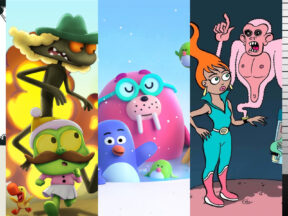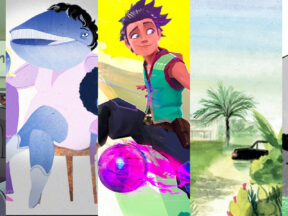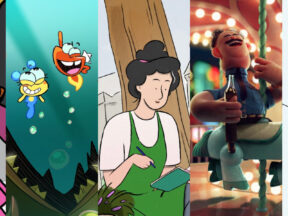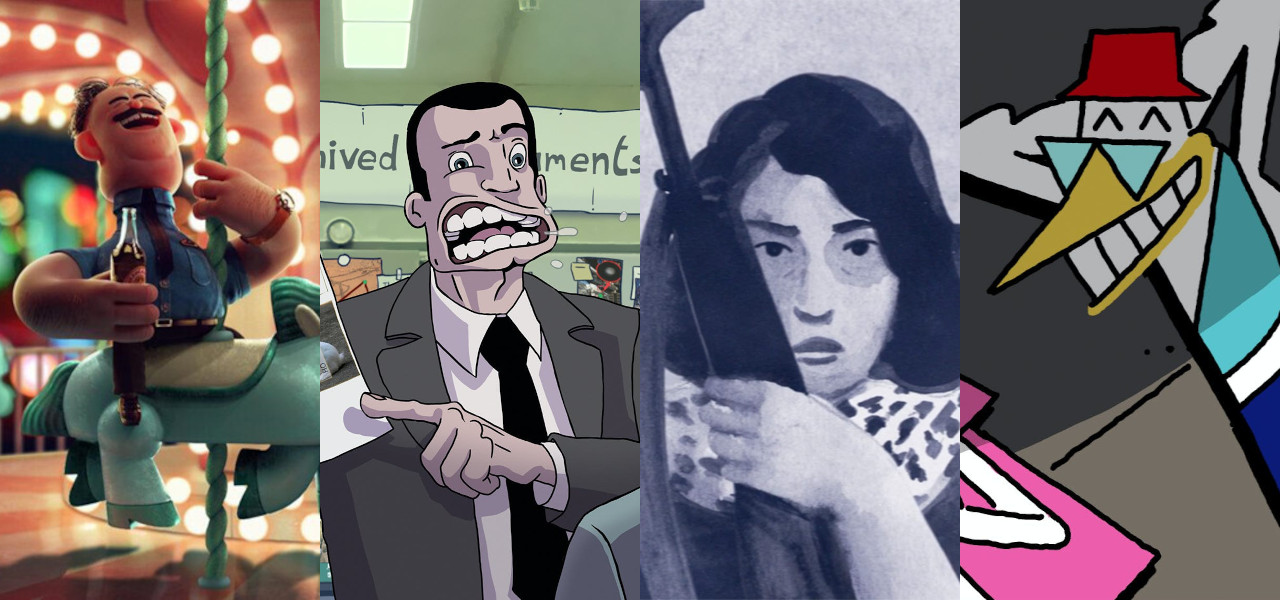
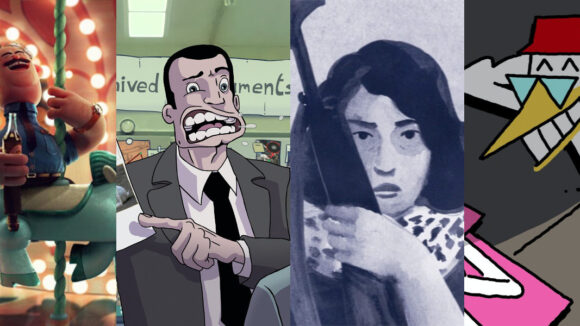
Europe Has A Spotty Record With Adult Animated Series. These Creators Hope to Change That
The differences in how adult animation is produced in the U.S. and Europe are diverse and plentiful. A cocktail of cultural, political, and financial circumstances has twisted the sector into the industry we have today, where there exists a significant discrepancy in the quantity and success of adult animated series on either side of the Atlantic.
In the U.S., some of the most successful animated series of the last 40 years have been in the adult sphere. Shows like The Simpsons, Family Guy, and Rick & Morty have set examples for American animation houses to follow, something that’s less prevalent in Europe.
Recently, though, a new wave of European animated series creators have been making inroads in the adult animation space. We spoke to several of the creators leading the charge about the advantages of creating series for adults as well as the challenges it presents.
Unfiltered Storytelling
Last month, more than 80 series were pitched at Cartoon Forum in Toulouse, a European event where animated tv projects are presented to potential production and distribution partners. Of those 80, only 11 were aimed at young adults or older. That number is on a par with the European adult animation industry at large, where shows for mature audiences are in the minority. For a few bold creators, however, the lack of programming for adults presents an opportunity for change.
Julien Seze is an animator who pitched his show Apocalypse Mojito at Cartoon Forum. The series sees two friends take a road trip through a post-apocalyptic Earth destroyed by climate change. The show was initially aimed at kids but developed into something too cutting for a young audience. After changing the show’s target demographic, Seze no longer needed to filter its message about human self-inflicted disasters. He says that change allowed the show to embrace a darker tone more freely.
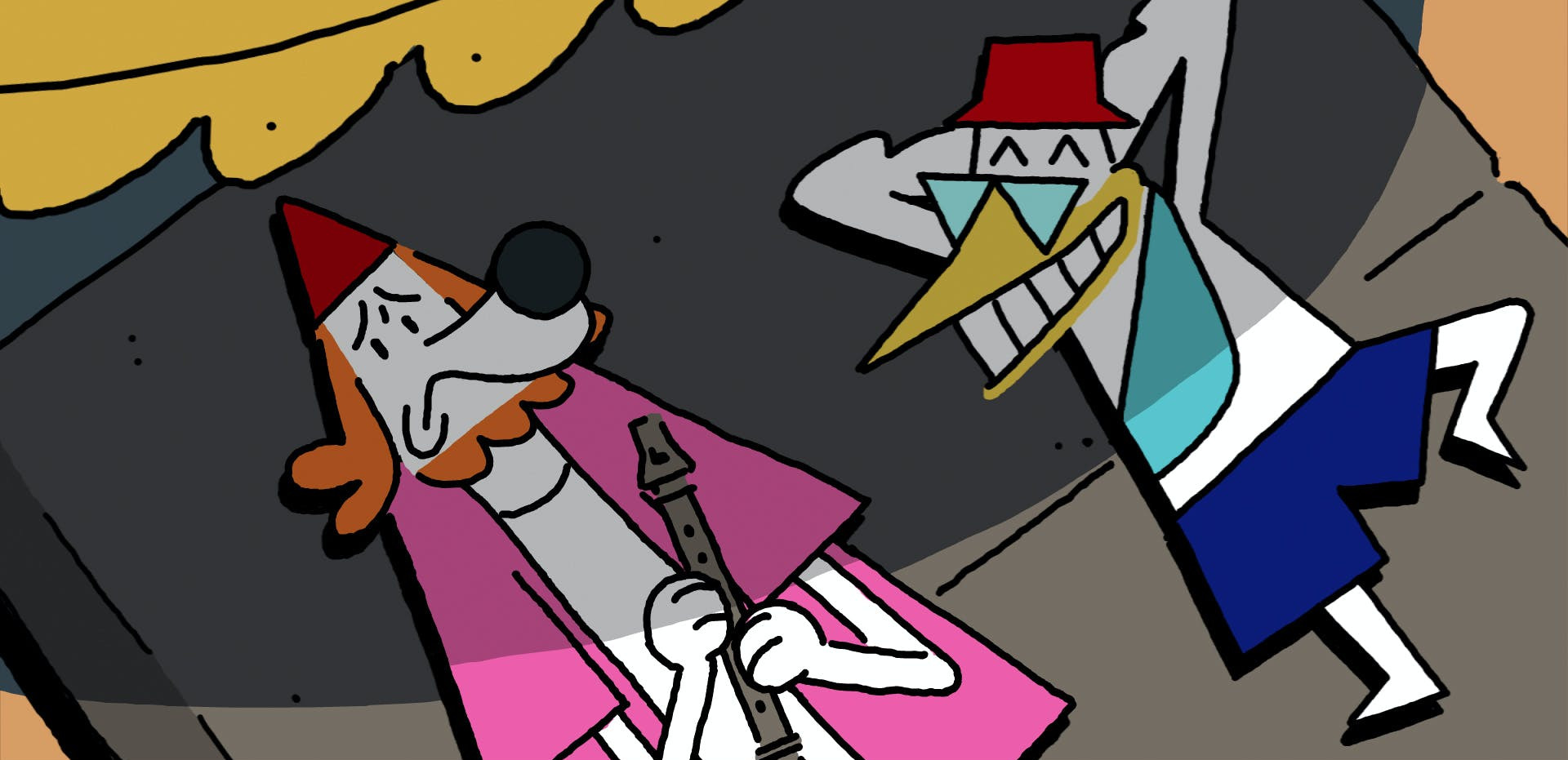
“I realized I’m actually way less nice than I thought, and I’d rather see the people I don’t like die, these politicians, these are powerful people that can ruin everything,” Seze told us. “Let’s make them die in a way where they’re responsible for their own death.”
Political Expression
Animation as a tool for political power is also reflected in Granny and Grandpa’s Revolutionary Roads, another Cartoon Forum project. Produced by Alexandre Cornu and Shiraz Bazin-Moussi, the docuseries follows the stories of freedom fighters in the Middle East between the 1940s and 1960s.
Cornu explained why animation is the right medium for the story he wants to tell, saying, “You know what it’s like to be in the mind of these people, the huge actors of this transformation. I think [animation] is the only way we have to rebuild [the stories] and share them with people.”
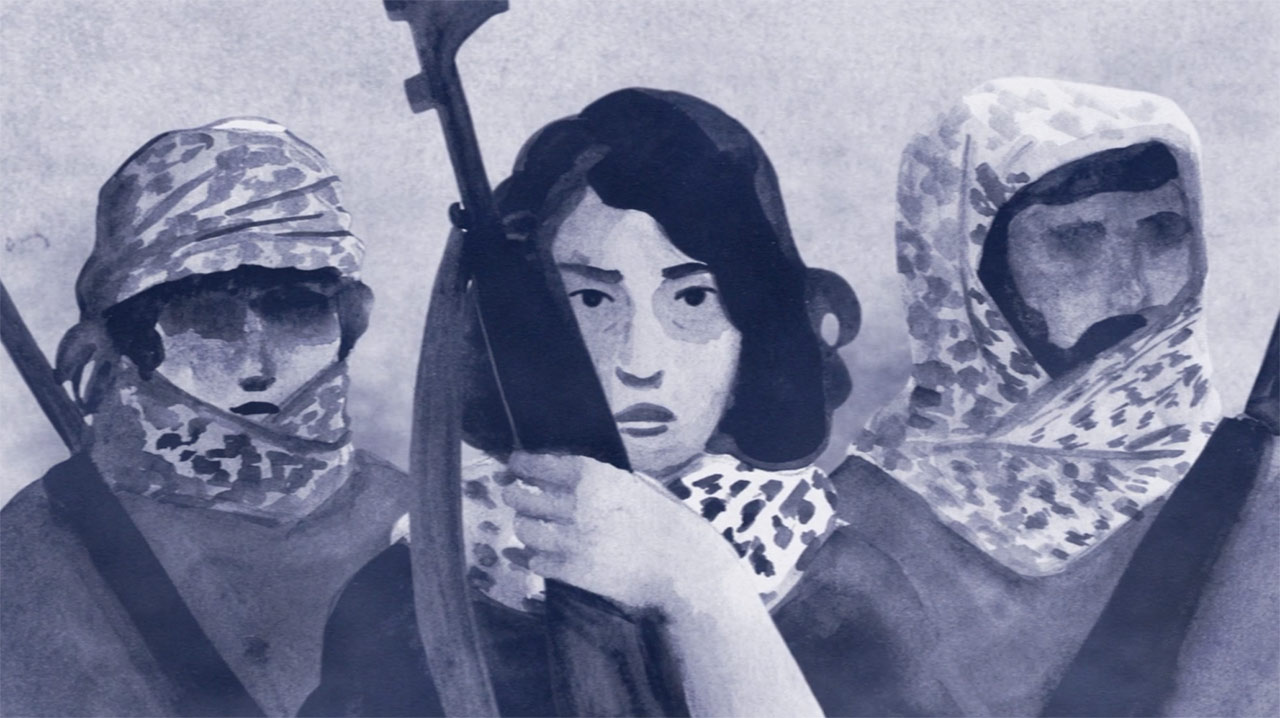
Embracing the Surreal
Bazin-Moussi saw animation as a tool for more surreal story elements. Since Granny and Grandpa proposes to tell stories from the entire lifetimes of its protagonists, “the choice of animation is linked to the distance that we can have with reality. There’s a distance between the timeline of the characters and the timeline of their history.”
Working in adult animation also offers artists the chance to tell more diverse stories. Marc Bodin, the producer of Apocalypse Mojito, told us about the freedom his team found when they shifted the series to target adult audiences.
“I would say [broadcasters] are more careful when it’s a question of kids’ shows and less careful on writing when it’s for adults, so it’s maybe easier to write,” he explained. “It’s also freer because economically, it is less important since it’s a niche.” At Cartoon Forum, Bodin announced a partnership with France TV to produce Apocalypse Mojito, a sign that perhaps traditional broadcasters aren’t entirely neglecting that niche.
Aesthetic Risktaking
Creating shows for adults can be technically liberating as well. Laurie Rowan, who co-created the comedy series Pleasure Beach with comedian Sean McLoughlin, explained that his show intends to communicate the feeling of being “depressed in a fun place.” Tradition would dictate that the show be animated as a 2d sitcom, the way the classics of the adult arena often are. But Rowan’s real-time cg approach demonstrates a desire to change what adult animation can be in the modern day. “We realized that we didn’t necessarily have to fit that mold. It’s not staged in the same way as what we’re familiar with 2d animated sitcoms. We want to do well to be very tactile, and we want things to feel weighted.”
Adult series often allow their artists to craft stories that couldn’t be told in any other medium. That takes bravery in an industry where finding work can be so difficult. “Think about The Simpsons. If you read about how that show went on the air, how much of a battle it was, and how much of an enormous gamble it was viewed as. Even in the writers’ room, they all said there’s no way this show will work or people will watch it,” said Pleasure Beach’s Sean McLoughlin. “But that just kicked the door down for an entire cottage industry over in the States. You just hope or assume that, at some point, something like that will happen here.”
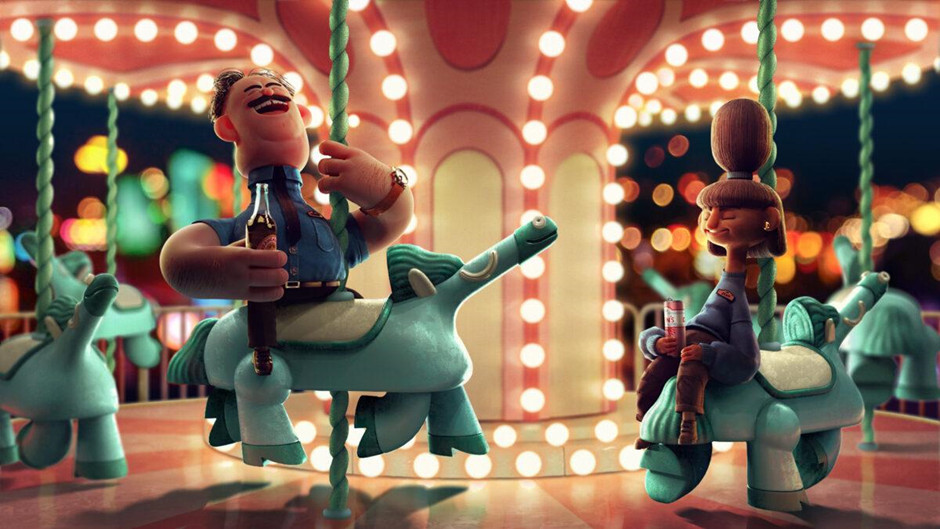
Hurdles
These filmmakers are passionate about adult animation and push to tell stories diverse in tone and intended audience. They’re not alone, however, and the community of like-minded creatives within Europe is significant and growing. That said, several well-entrenched difficulties remain.
For some, the problem lies in how animation is taught in Europe. Seze recalled an experience with Animation Sans Frontiéres, a program that prepares young animators for the industry. He told us, “I just censored myself because they teach us about fitting into the market and being aware of the broadcaster’s desires.”
European broadcasters often view children’s shows as foundational to the industry and adult series much less so. Bazin-Moussi explains, “You have to fill up the pipelines for children. You have to fill out the program. It’s easier for international sales. Children programs are easier for France to export.” The funding gained from such sales typically gets recycled into making more of the same, making it harder to create something outside of that mold.
Noam Roubah, a showrunner who pitched his project B.A.D.’s Agents at Cartoon Forum, echoed that sentiment. He told us, “It’s a huge market. There always will be kids, and the audience is renewable. With adults, maybe it’s more about the season. They like this kind of stuff for now, and in 10 years, they won’t like it. Maybe it’s more linked to the worldwide trend.”
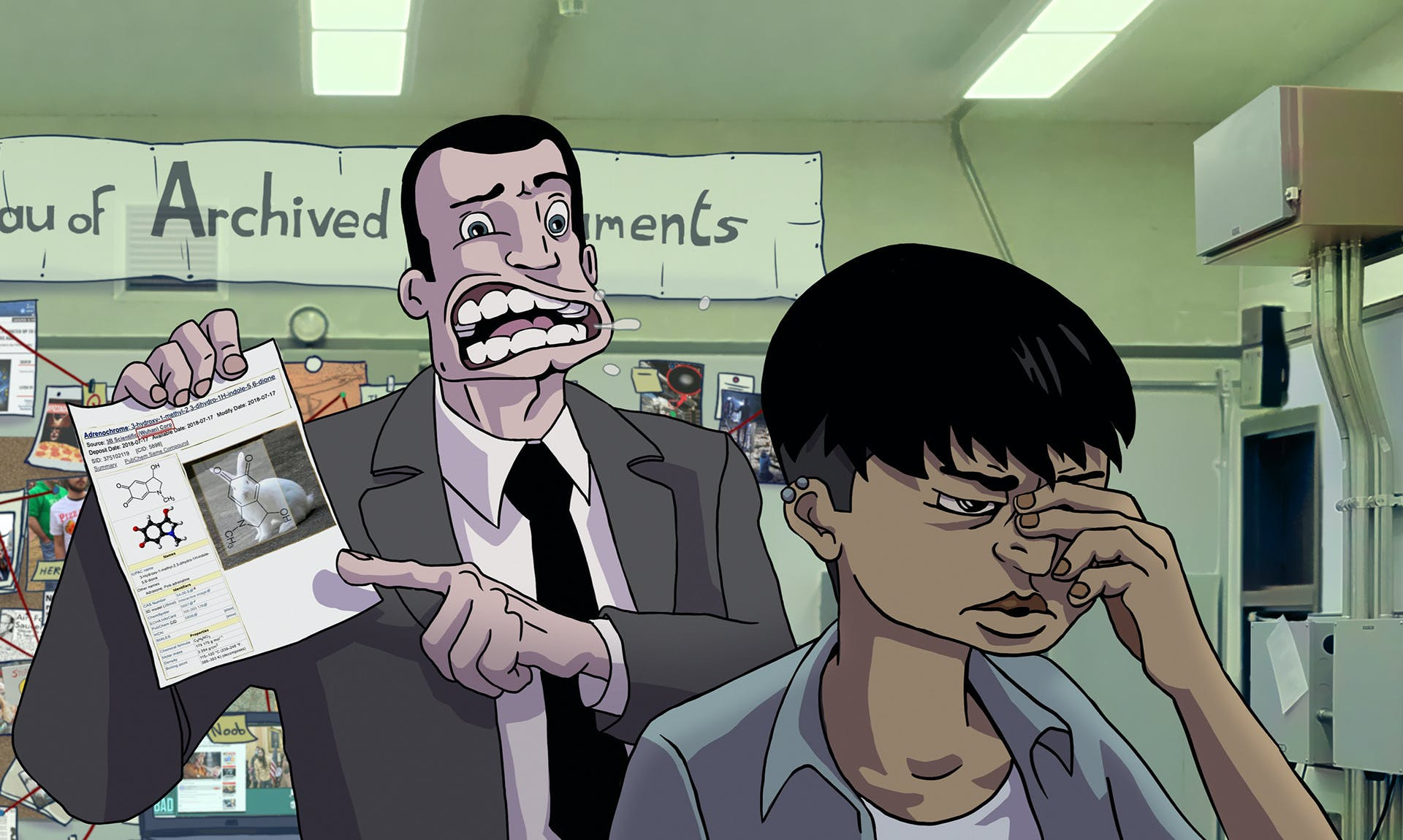
Audience Demand
Charlotte Bavasso of U.K.-based Nexus Studios pointed out that just as Europe sells kids’ shows internationally, America is the great exporter of adult animated programming, and that has created the current paradigm.
“The size of the audience they manage in the U.S. is brought naturally by the size of the territory, but they also managed to garner a bigger audience from a couple of shows that worked really well,” she explained, crediting the most popular U.S. series for having a disproportionately large impact on audiences’ taste. “Europe was buying these shows, so your viewers were watching South Park and all this stuff,” she added.
Finding a Distributor
Despite being dominated by deeply rooted domestic broadcasters, the European tv industry does have pockets where more subversive work can thrive. Streamers like Netflix and Disney+ have a worldwide reach, giving more niche shows a stronger chance of finding their audience, just as they do in America with its larger population.
However, working with big streamers is a challenge for indie filmmakers like Roubah. “From my perspective as a small independent producer, it is easier to go to broadcasters,” he told us. “The communication is simpler. We can talk to them very easily. We don’t have to have a huge track record of work for Netflix or Amazon or Disney.”
There is a consensus that getting recognized by international streamers is far more complicated than catching the eye of a national broadcaster. That said, with domestic partners, budgetary concerns are especially important. In Roubah’s case, he had to highlight B.A.D.’s Agents‘ cost-cutting techniques to keep network commissioners’ attention. Using live-action backgrounds and producing shorter episodes significantly reduced the show’s cost, making it less risky and more palatable for potential broadcast partners.
A Reason for Optimism
Adult animation is flexible – more flexible than most of today’s popular U.S. shows demonstrate. It can be used as a vehicle for great comedy but also as a call to political action, to deliver an ecological message, or as an expression of culture. Producing an adult animated series lets artists push beyond what audiences are used to seeing. Sometimes, that can be a scary concept for those focused on the bottom line. But it can also enrich the artistic output of a studio, a country, and a continent. Fighting for better and more representative distribution of domestically-produced series may seem like a significant challenge, but a dedicated few are up to the task.

.png)
